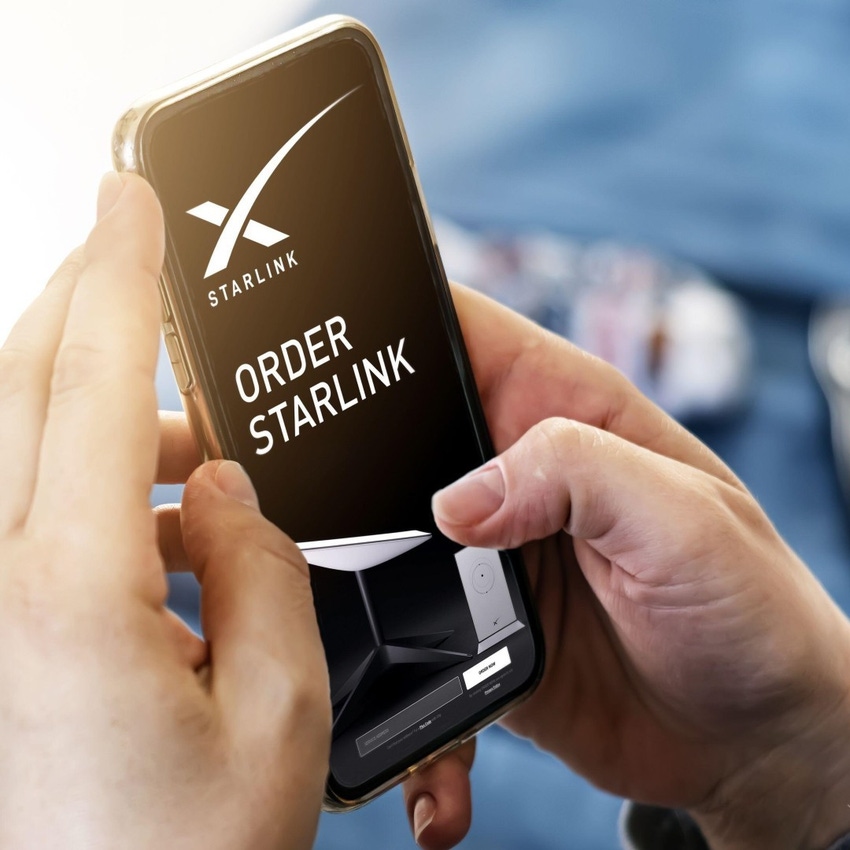FCC clears SpaceX to connect Starlink to boats, planes, other moving vehicles
The caveat is that SpaceX must accept any and all interference from future 5G operations, including those in the 12GHz band.

SpaceX's Starlink satellite broadband service could soon be on the move.
The Federal Communications Commission (FCC) has given SpaceX the green light for its Starlink satellite broadband platform to connect to boats, planes, trucks, RVs and other types of moving vehicles, effectively forging a new service path for Starlink.
Today the service uses a network of low-Earth orbit (LEO) satellites to deliver fixed satellite data services to residential and business customers. Starlink has more than 400,000 customers worldwide, primarily in the residential category.
Figure 1:  Starlink uses a constellation of satellites to deliver broadband to fixed locations, but an FCC order allows expansion of the service to moving vehicles.
Starlink uses a constellation of satellites to deliver broadband to fixed locations, but an FCC order allows expansion of the service to moving vehicles.
(Source: Panther Media GmbH / Alamy Stock Photo)
"Authorizing a new class of terminals for SpaceX's satellite system will expand the range of broadband capabilities to meet the growing user demands that now require connectivity while on the move, whether driving an RV across the country, moving a freighter from Europe to a US port, or while on a domestic or international flight," the FCC's international bureau chief, Tom Sullivan, wrote in the order (PDF).
Last week's approval order follows SpaceX's application earlier this year for blanket-licensed Earth Stations in Motion, or ESIMs.
Interference conditions
SpaceX's proposal for ESIMs includes spectrum in the range of 12.2-12.7GHz – a slice of spectrum generally known as the 12GHz band. RS Access (a company funded by Michael Dell's investment firm) and Dish Network opposed SpaceX's proposed use of the 12GHz band based on interference concerns, but the FCC is still analyzing it and has yet to make a final ruling.
However, the FCC has concluded that authority of operations in the 12GHz band serves the public interest, as it will expand broadband into unserved and underserved areas. As a condition of the FCC's approval, ESIM operations of SpaceX "must accept any interference received from both current and future services authorized" in the 12GHz band "and must not cause harmful interference to any authorized service, whether licensed or not," the FCC's Sullivan explained.
Dish's public policy chief, Jeffrey Blum, told The Wall Street Journal that the company was still reviewing the FCC order but was pleased that SpaceX must "accept any and all interference from future 5G operations and that they must clearly disclose such limitations to their customers."
SpaceX has not announced when it intends to push ahead with a plan to support moving vehicles, but FCC clearance will enable Starlink to pursue connectivity agreements more aggressively in markets such as aviation, which is already covered by competitors such as Viasat and Hughes Network Systems. Those companies rely on a much smaller number of geosynchronous (GEO) satellites sitting at higher orbits than Starlink's LEO constellation. However, Hughes Network Systems is also in the LEO game through its partnership with and investment in OneWeb.
SpaceX has already signed deals with Hawaiian Airlines and JSX, an independent air carrier. Delta Airlines has reportedly run some tests with SpaceX/Starlink.
Related posts:
— Jeff Baumgartner, Senior Editor, Light Reading
About the Author(s)
You May Also Like




_International_Software_Products.jpeg?width=300&auto=webp&quality=80&disable=upscale)






